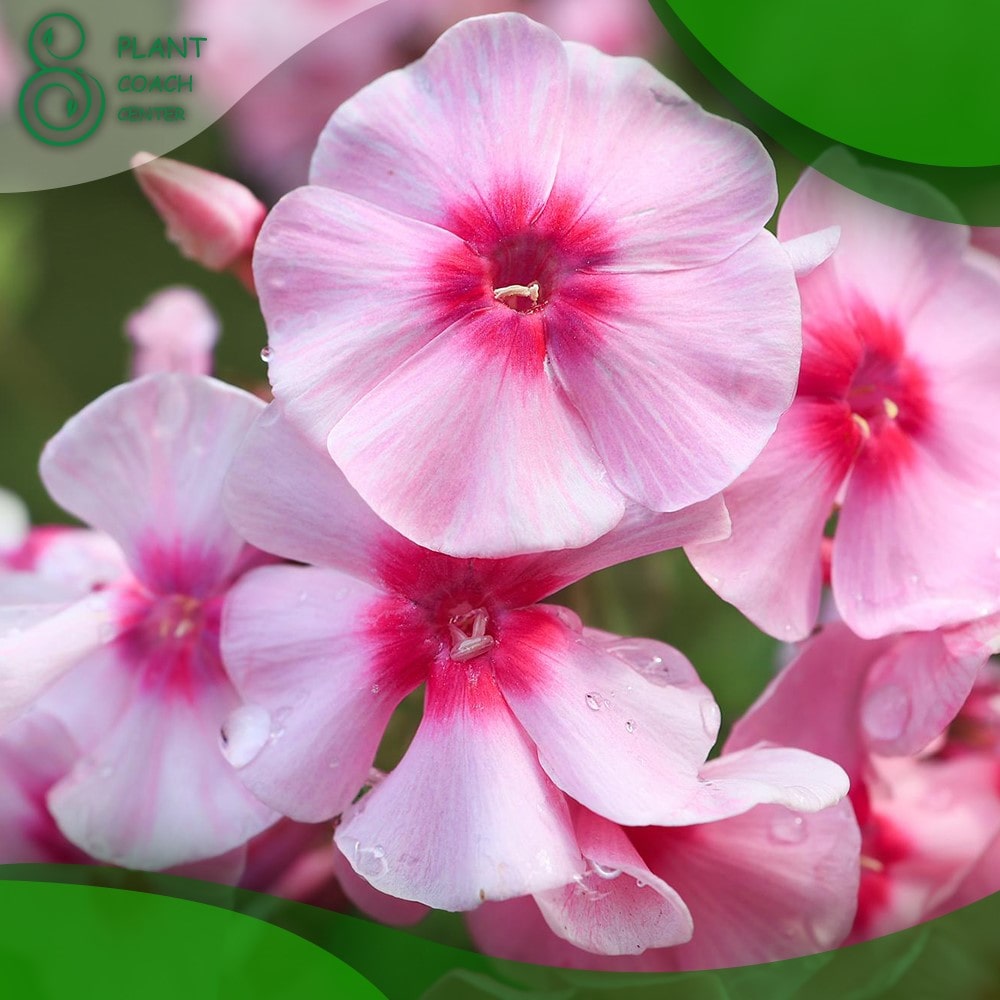When to Cut Back Phlox
Phlox plants are beloved for their vibrant flowers and ability to add color to gardens and landscapes. With its clusters of delicate blossoms and pleasant fragrances, phlox is a popular choice for many gardening enthusiasts. However, like any plant, phlox requires proper care and maintenance to thrive.
One crucial aspect of phlox care is knowing when and how to cut back the plant. This comprehensive guide will explore the ideal timing, techniques, and benefits of cutting back phlox to ensure its continued health and vitality.
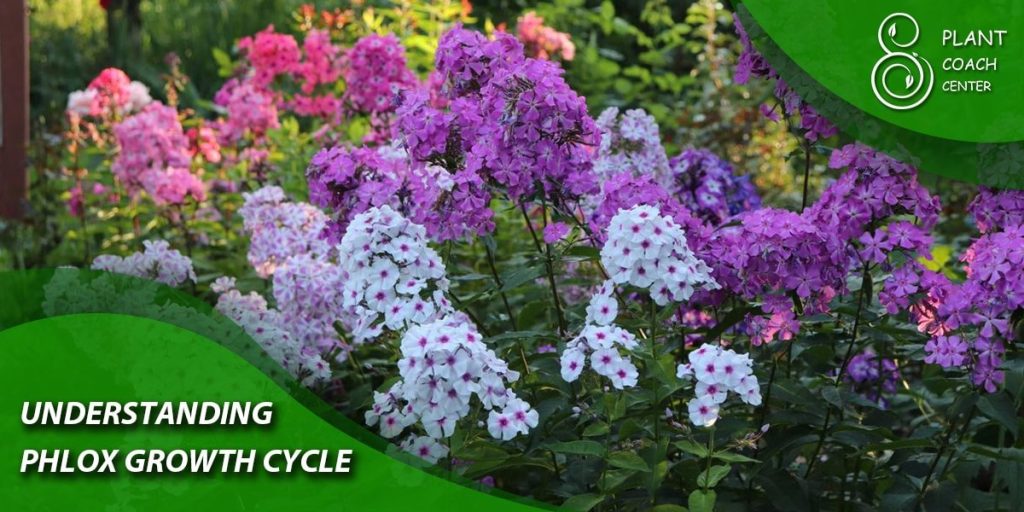
Understanding Phlox Growth Cycle
To effectively determine when to cut back phlox, it is essential to have a good grasp of the plant’s growth cycle. Phlox plants undergo distinct stages of growth, each with its unique characteristics. By understanding these stages, you can better identify the signs that indicate when pruning is necessary. Furthermore, various factors, such as environmental conditions and overall plant health, can influence phlox growth and development.
Signs that Indicate It’s Time to Cut Back Phlox
Knowing when to cut back phlox is essential for maintaining the plant’s health and appearance. By observing sure signs, you can determine the optimal time for pruning. Here are some indicators that suggest it’s time to cut back on your phlox:
Visual Clues for Pruning Phlox
Visual cues play a crucial role in identifying when to prune your phlox. Look for the following signs:
- Dead or Withered Stems: If you notice any stems that are brown, dry, or withered, it’s a clear indication that those stems are no longer actively contributing to the plant’s growth. Removing these stems will improve the plant’s appearance and overall health.
- Overcrowding: Phlox plants tend to spread and become dense over time. If your phlox has become overcrowded, with stems growing too closely together and potentially shading each other, it’s a sign that some thinning and cutting back are necessary. Thinning out the stems will allow better airflow and light penetration, reducing disease risk and promoting healthier growth.
Evaluating Phlox Health and Vigor
Your phlox plant’s overall health and vigor are essential factors when determining if pruning is needed. Assess the following aspects:
- Foliage Quality: Observe the foliage of your phlox. If you notice any signs of discoloration, wilting, or disease, it may indicate that some pruning is required. Removing affected stems can help prevent the spread of disease and improve the plant’s overall health.
- Weak Growth: If your phlox appears weak, with thin, spindly stems and lackluster foliage, it might benefit from some pruning. Cutting back certain stems can redirect the plant’s energy towards more robust growth, resulting in a healthier and more vibrant plant.
- Vigorous Growth: On the other hand, if your phlox is growing excessively and becoming unruly, with stems that are too long and sprawling, it’s a sign that some pruning is necessary to maintain its shape and prevent overgrowth. Trimming back these vigorous stems will help promote a more compact and well-mannered plant.
Identifying these signs will enable you to decide when and how to cut back your phlox. Regularly monitoring your plants and addressing these indicators promptly will contribute to their overall health, appearance, and longevity.
By considering both visual clues and evaluating the health and vigor of your phlox, you can determine the appropriate timing for pruning. This proactive approach will help ensure your phlox plants remain healthy, vibrant, and a beautiful addition to your garden.
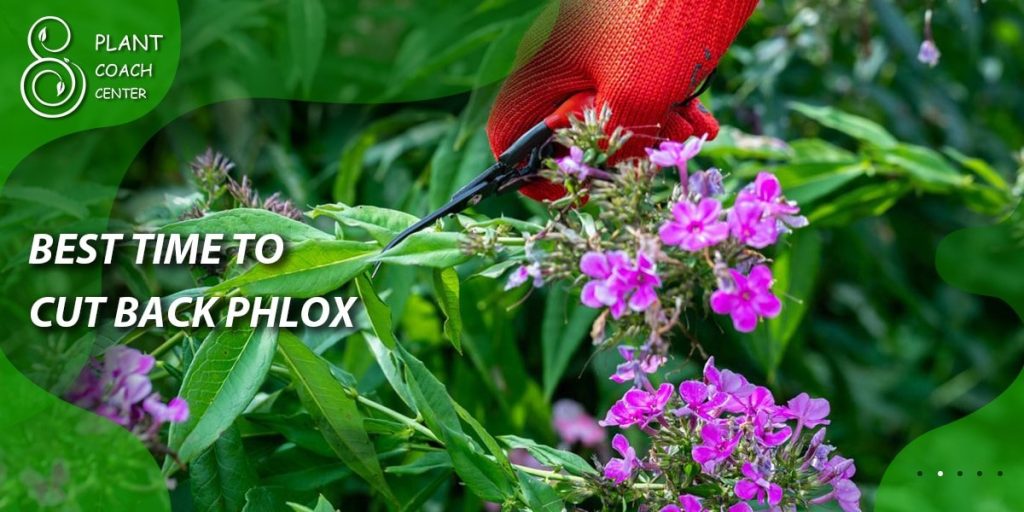
Best Time to Cut Back Phlox
Determining the best time to cut back phlox is crucial for ensuring the plant’s health and promoting optimal growth. The timing of pruning can vary depending on the specific phlox variety and the climate in your region. Here are the critical seasonal considerations for cutting back phlox:
Spring Pruning
Spring is generally an ideal time to prune many phlox varieties. It’s best to wait until the threat of frost has passed, and new growth begins to emerge. Spring pruning offers the following benefits:
- Promotes New Growth: By cutting back phlox in spring, you stimulate fresh, healthy growth for the upcoming growing season. This encourages the plant to produce more robust stems, foliage, and blooms.
- Shape Control: Spring pruning allows you to shape and control the growth of your phlox plants before they become too tall or unruly. Trimming back excessive growth can help maintain a compact and well-mannered appearance.
- Prevents Flopping: Some tall varieties of phlox tend to flop or lean under the weight of their blooms. Pruning in spring can help reduce the risk of flopping by encouraging sturdy, upright growth.
Summer Pruning
While spring is the primary pruning time for most phlox varieties, some specific situations may warrant summer pruning. Consider the following scenarios:
- Deadheading: Removing spent flowers during the summer can prolong the blooming period of your phlox. Pinch or cut off the faded blooms just above a set of healthy leaves to encourage the plant to produce more flowers.
- Controlling Overgrowth: If your phlox plants grow excessively and become unmanageable during the summer, you can selectively trim back stems that encroach on other plants or obstruct walkways. However, be cautious not to remove too much foliage, which may hinder the plant’s ability to photosynthesize and gather energy.
Fall Pruning
Fall pruning is generally not recommended for phlox, except for specific circumstances:
- Disease Prevention: If your phlox plants have been prone to disease or fungal issues, removing and discarding any diseased stems in the fall can help prevent the pathogens from overwintering and infecting the plant in the next growing season. Make sure to dispose of the pruned material properly to prevent the spread of diseases.
- Preparing for Winter: In regions with harsh winters, you can lightly trim back the stems of your phlox in the fall to remove any overly long or weak growth. This can help prevent snow or ice damage and promote better airflow around the plant, reducing disease risk.
It’s important to note that weather conditions and local climate are significant in determining the best time to cut back phlox. Suppose you live in an area with unpredictable spring frost or extreme summer heat. In that case, it’s crucial to adapt your pruning schedule accordingly. Always consider the specific needs of your phlox variety and the conditions in your region when deciding the best time for pruning.
By timing your pruning activities appropriately, you can maximize the benefits of cutting back phlox, promote healthy growth, and ensure a visually appealing and well-maintained plant throughout the growing season.
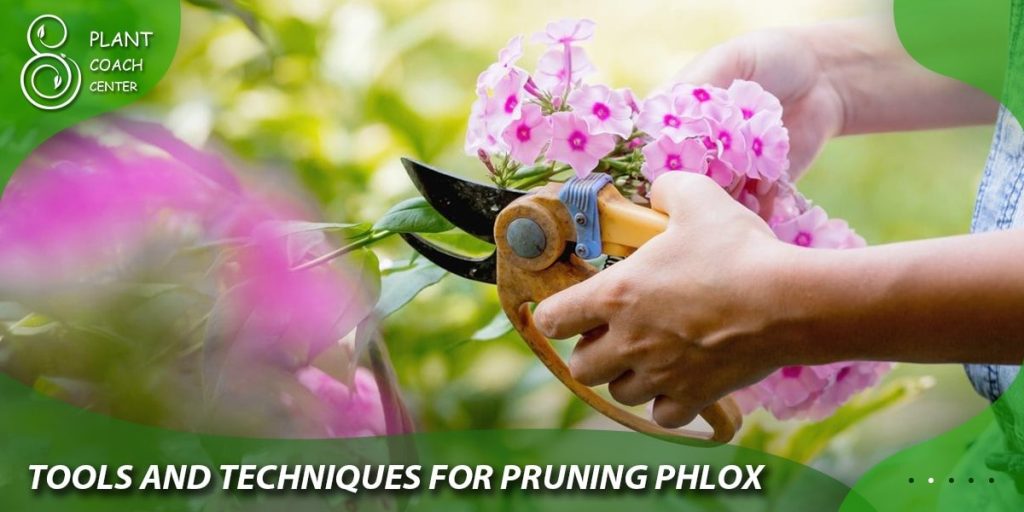
Tools and Techniques for Pruning Phlox
Pruning phlox requires proper tools and techniques to ensure clean and effective cuts promoting plant health and aesthetics. Here are some essential tools and techniques to consider when pruning phlox:
Essential Tools for Pruning Phlox
Having the right tools is crucial for successful pruning. Here are the essential tools you’ll need:
- Pruning Shears: Invest in sharp, bypass pruning shears. These shears have two curved blades passing each other, resulting in a clean cut without crushing the stem.
- Pruning Saw (optional): A pruning saw may be necessary for older or woody phlox stems. This tool allows you to make clean cuts on thicker branches or stems that are beyond the capacity of pruning shears.
- Gloves: Wear gardening gloves to protect your hands from thorns, prickles, or rough plant material while pruning.
Proper Pruning Techniques
Following proper pruning techniques specific to phlox is essential to ensure optimal results. Here are some essential techniques to consider:
- Pruning Dead or Damaged Stems: Start by identifying dead, diseased, or damaged stems on the phlox plant. Using pruning shears, make clean cuts just above a set of healthy leaves or buds. Removing these non-viable stems will improve the overall appearance of the plant and prevent the spread of diseases.
- Cutting Back for Renewal: Phlox plants can benefit from rejuvenation pruning every few years. This technique involves cutting back the entire plant to a few inches above the ground, typically in early spring before new growth emerges. Rejuvenation pruning helps stimulate vigorous new growth and rejuvenates the plant’s health and vitality.
- Controlling Height and Shape: If your phlox plants are becoming too tall or unruly, you can selectively trim back the stems to control their height and shape. Make the cuts just above a set of leaves or buds to encourage branching and bushier growth. This technique helps maintain a more compact and well-mannered appearance.
It’s important to note that different phlox varieties may have specific pruning requirements. Here are some examples:
- Garden Phlox (Phlox paniculata): When new growth appears in early spring, prune back garden phlox by removing about one-third of the stems. Cut the stems just above a set of healthy leaves or buds. If the plant is overgrown or lacks vigor, a more drastic rejuvenation pruning can be done every few years.
- Creeping Phlox (Phlox subulata): After the main flowering period, trim the stems of creeping phlox to encourage a denser and more compact growth habit. Cut just above a set of leaves or buds, leaving some foliage intact.
- Woodland Phlox (Phlox divaricata): Trim the spent flower stems to encourage new growth and potential reblooming after blooming in early summer. Cut just above a set of leaves or buds.
Using appropriate tools and proper pruning techniques can ensure clean and precise cuts that promote the plant’s health, shape, and overall appearance. Regular pruning will help keep your phlox plants in good condition, enhance their vigor, and encourage abundant blooms. Remember to regularly clean and maintain your pruning tools to ensure their efficiency and longevity.
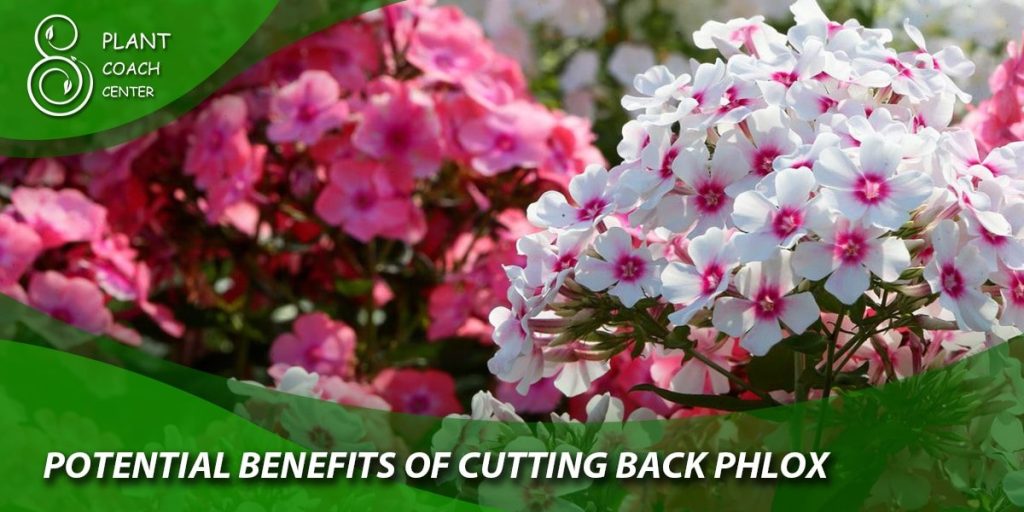
Potential Benefits of Cutting Back Phlox
Pruning phlox offers several benefits that contribute to the overall health and aesthetics of the plant. By cutting back phlox appropriately, you can enhance its vigor, stimulate new growth and abundant blooms, and prevent disease and pest infestations. Regular pruning encourages the plant to allocate resources efficiently and focus on producing healthy foliage and vibrant flowers.
Step-by-Step Guide to Cutting Back Phlox
Now that we understand the importance and benefits of pruning phlox, let’s dive into a step-by-step guide to help you through the process. Before you start, ensure you have prepared all the tools mentioned earlier. Follow these steps:
Preparing for Pruning
- Ensure your tools are clean and sharp.
- Put on gardening gloves to protect your hands.
- Remove any debris or dead foliage around the phlox plant.
Techniques for Different Phlox Varieties
- Garden Phlox
- When new growth appears in early spring, prune back the plant by removing one-third of the stems.
- Cut the stems just above a set of healthy leaves or buds.
- If the plant is overgrown or lacks vigor, a more drastic rejuvenation pruning can be done every few years.
Aftercare and Maintenance Tips
- Water the phlox plant thoroughly after pruning to help it recover and reduce stress.
- Apply a layer of organic mulch around the base of the plant to retain moisture and suppress weed growth.
- Monitor the plant regularly for signs of pests, diseases, or nutrient deficiencies and take appropriate action.
Common Mistakes to Avoid When Cutting Back Phlox
While pruning phlox can be beneficial, it’s essential to avoid common mistakes that can hinder the plant’s growth and health. Some critical mistakes to avoid include pruning at the wrong time, using improper cutting techniques, and neglecting aftercare and maintenance. Pruning at the wrong time, such as during the growing season or winter, can disrupt the plant’s natural growth cycle. Improper techniques, such as cutting too low or leaving stubs, can lead to weak growth or disease susceptibility. Neglecting aftercare, such as failing to water or provide adequate nutrients, can hinder the plant’s recovery and future growth.

Troubleshooting Common Phlox Problems
While pruning can help maintain phlox health, it’s essential to be aware of common problems affecting these plants. Disease and fungal issues, such as powdery mildew or root rot, can occur if the plant is not adequately cared for or if it is subjected to unfavorable environmental conditions.
Pest infestations, including aphids or spider mites, can also affect phlox. Environmental stressors such as extreme temperatures or inadequate sunlight can also impact the plant’s overall health and vitality. Understanding and addressing these issues promptly can help ensure the long-term success of your phlox plants.
Conclusion
Knowing when to cut back phlox is vital for their health and appearance. By understanding the phlox growth cycle, recognizing the signs that indicate pruning is necessary, and applying the appropriate techniques, you can promote vigorous growth, abundant blooms, and a well-shaped plant. Remember to consider the specific requirements of different phlox varieties and adhere to proper pruning practices. By practicing regular plant coaching through thoughtful pruning, you can enjoy the beauty and vibrancy of phlox plants in your garden for years to come.
When is the best time to cut back phlox?
Spring is generally the best time for pruning phlox after the threat of frost has passed.
What tools do I need for pruning phlox?
Essential tools include pruning shears, and a pruning saw for thicker stems.
Can I prune phlox in the fall?
Fall pruning is generally not recommended except for disease prevention or winter preparation in harsh climates.


